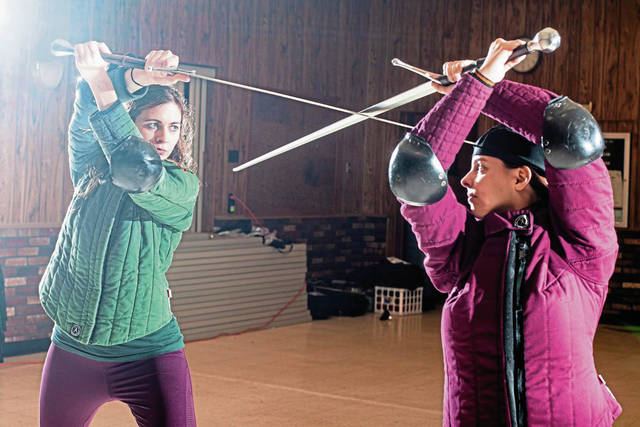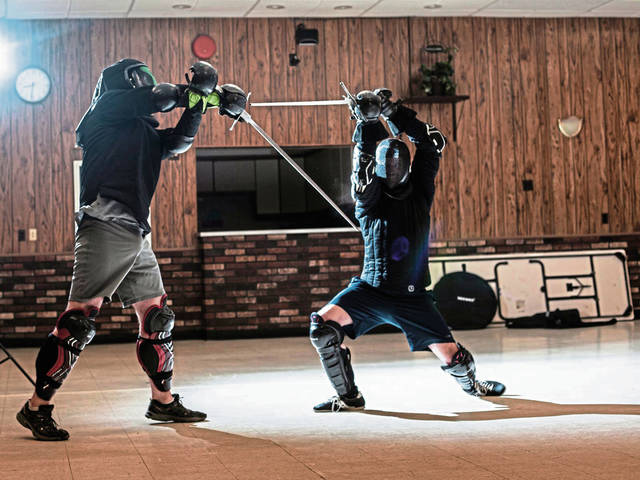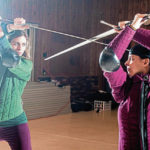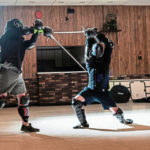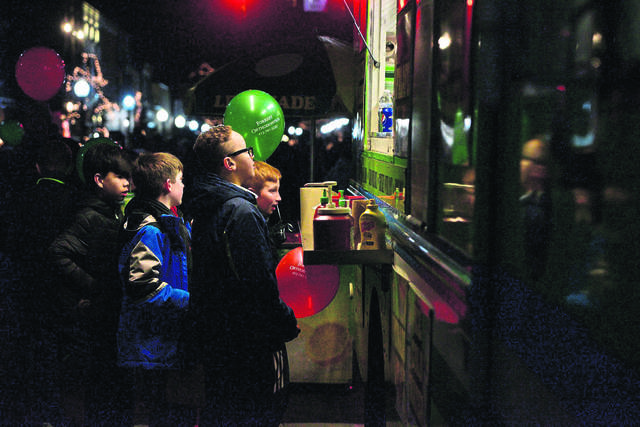It’s a Monday night and the sound of clanging swords fills Shaler Villa VFC Fire Hall.
Chris Shelton takes a break from the battle and leans against the wall, sweat dripping from his pores.
“It’s very cathartic,” he says. “You can’t think about your daily problems when someone is trying to stab you in the face.”
Shelton is an instructor for Steel City Historical Fencing, a club that brings swashbuckling fantasies to life. But, make no mistake, these aren’t kids with sticks reenacting their favorite scene from “The Lord of the Rings.” Skilled members use real weapons and ancient combat techniques.
Chris and Ashleigh Hobbs founded the organization in 2017.
The Penn Hills couple, transplants from Louisiana, wanted to find people interested in fencing and the stories behind the sport.
Steel City is part of the Historical European Martial Arts (HEMA) club, which gleans information from old manuals written between 1300 and 1800 that ended up in museums or private collections. Some clubs — there are about 750 throughout the world — pick one source and follow it to the letter. Others are a hodgepodge of styles.
Chris Hobbs said his group studies the teachings of several German and Italian masters, including longsword experts. The steel weapon is 52 inches long and weighs between 3 and 4 pounds. Wielding it is a workout, especially when you’re wearing a fencing jacket, hard-plated forearm, elbow, shin and knee protectors, “lobster” heavy gloves and a face mask.
Fencing can become an expensive hobby.
To ease costs, Steel City provides loaner equipment to members and curious folks who sign a waiver.
Classes are held three days a week at 960 Saxonburg Blvd. in Shaler. Intro to Longsword is an eight-week course for beginners. Most participants are in their 20s and 30s, but there are a few older students.
Kids as young as 12 can pick up some cutlery as long as they are taking the class with a parent or guardian.
Each session starts with 20 minutes of warm-up activities followed by a 40-minute lesson filled with drills and games. During the final half-hour, students can practice free sparring with any weapon in the arsenal, from sabers to rapiers.
“We have a format that forces people to grow and become better fighters,” Chris Hobbs says. “Winning is a byproduct of fencing correctly.”
He grew up fascinated by sword play and, in the last five years, has become an expert on the tournament circuit. He ranks No. 7 in the United States and No. 40 in the world.
Steel City participates in eight to 10 competitions a year throughout the region, which is anywhere within a six-hour drive.
Members (there are roughly 40) also take part in sparring camps and workshops.
Unlike Olympic fencing, which is cutthroat, HEMA clubs are typically more community-based and easygoing. Chris Hobbs jokingly says the “H” in HEMA really stands for “hugs.”
People who aren’t into combat can still join the club and geek out over the historical aspects of the activity and socialize.
The club recently set up a table at a “Game of Thrones”-themed event at Carnegie Museum of Natural History.
“Everyone is invited,” Ashleigh Hobbs says. “You can come and hit people without hurting people.”


